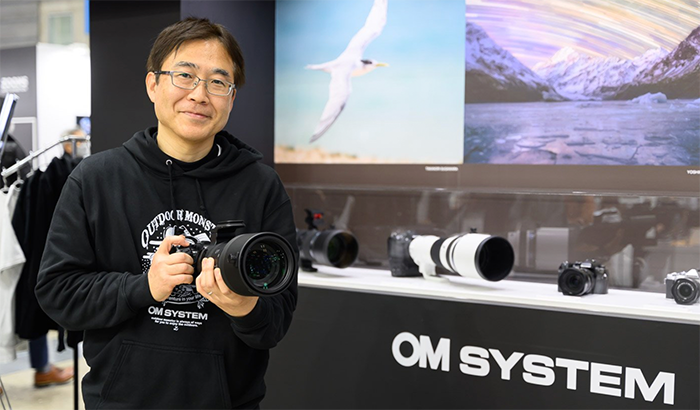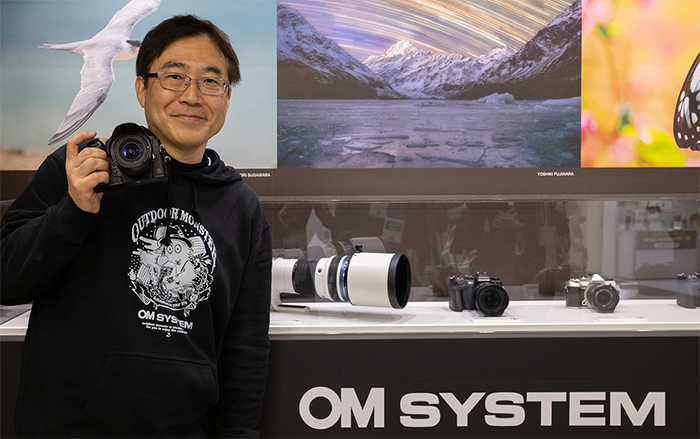Why should Olympus venture into full frame in 2019 (by sneye)
[shoplink 28222 ebay] [/shoplink]
[/shoplink]
Image on top. The “Full Frame” [shoplink 28222 ebay]OM-1 film camera[/shoplink].
 [/shoplink]
[/shoplink]Image on top. The “Full Frame” [shoplink 28222 ebay]OM-1 film camera[/shoplink].
This is a guest post from our reader Sneye:
Why should Olympus venture into full frame in 2019
I have been a mostly satisfied user of the 4/3 and Micro 4/3 systems for the past decade. I always considered those systems good enough for my needs and enjoyed their versatility and endurance a lot. But the times are changing and with smartphone cameras edging ever closer to the established systems in image quality and in usability – 2019 might be the right time for Olympus to try something new. Here’s why.
2019 will mark the beginning of the process whereby Canon and Nikon abandon their mirrored mounts. This is expected to give the camera market a good shake. Long time users of Canon or Nikon gear will be freed off their imposed loyalty. It’s a good timing for smaller players to throw in their own disruptions. Olympus has acquired some expertise in various aspects of the mirrorless technology and imaging in general. These days it offers a system that is physically robust, offers great JPEG out of the camera and is mostly fuss-free due to great AF and stabilization. Combine this low-maintenance philosophy with a larger sensor and you have serious competition to every other system on the market. Olympus will be bound to design and produce many new lenses in a short time, but so will Canon and Nikon. If the back flange distance is large enough, good lenses could be small and relatively simple to manufacture.
The progress in sensor technology has been slowing down in the past decade. Thus no real improvements in image quality are expected between camera generations, which manifests itself in a slowing market. In such a climate players are compelled to increase margins by concentrating on high-end products. Tge high pricing of the E-M1 mark II puts it in uncomfortable competition with larger formats. Olympus will not be able to get away with it for long. It will have to either reduce the price of its flagship or make it more competitive. To many users lens size alone is not regarded an adequate justification for paying a premium.
Phone cameras have been nibbling at the market for a while now and with multiple synchronized exposures becoming standard Micro 4/3 does not seem advantageous enough for Olympus to sit on its laurels. Of course, some aspects of computational imaging will make their way into “real” photography, but others will not due to bulkiness and complication. A larger sensor will at least buy Olympus a few more years in the game.

The Olympus patent describing a 35mm f/1.4 FF lens for a FF mirrorless
Evidence
2019 is Oly’s century anniversary. A good occasion to rethink and replan. Iit’s a good occasion to release something special, too.
Olympus has filed a few FF lens patents. As far as I know they are yet to be incarnated in actual optics in other systems, so they might be intended for use by Olympus itself.
The latest rumor suggests a new OMD camera announcement early next year. The time frame does not match the life cycles of existing OMDs (the E-M5 mark III should be announced before Photokina), but rather Canon’s and Nikon’s mirrorless announcements.
To end this discussion, I personally think that the real life advantage of full frame cameras over 4/3 has never been less significant (I use both formats). Most Micro 4/3 users do not need FF, even many of those who think they do. Nevertheless, due to a peculiar combination of circumstances Olympus can benefit from such an investment. Refraining from making it might mark the beginning of the end for Olympus Imaging.
Sneye



